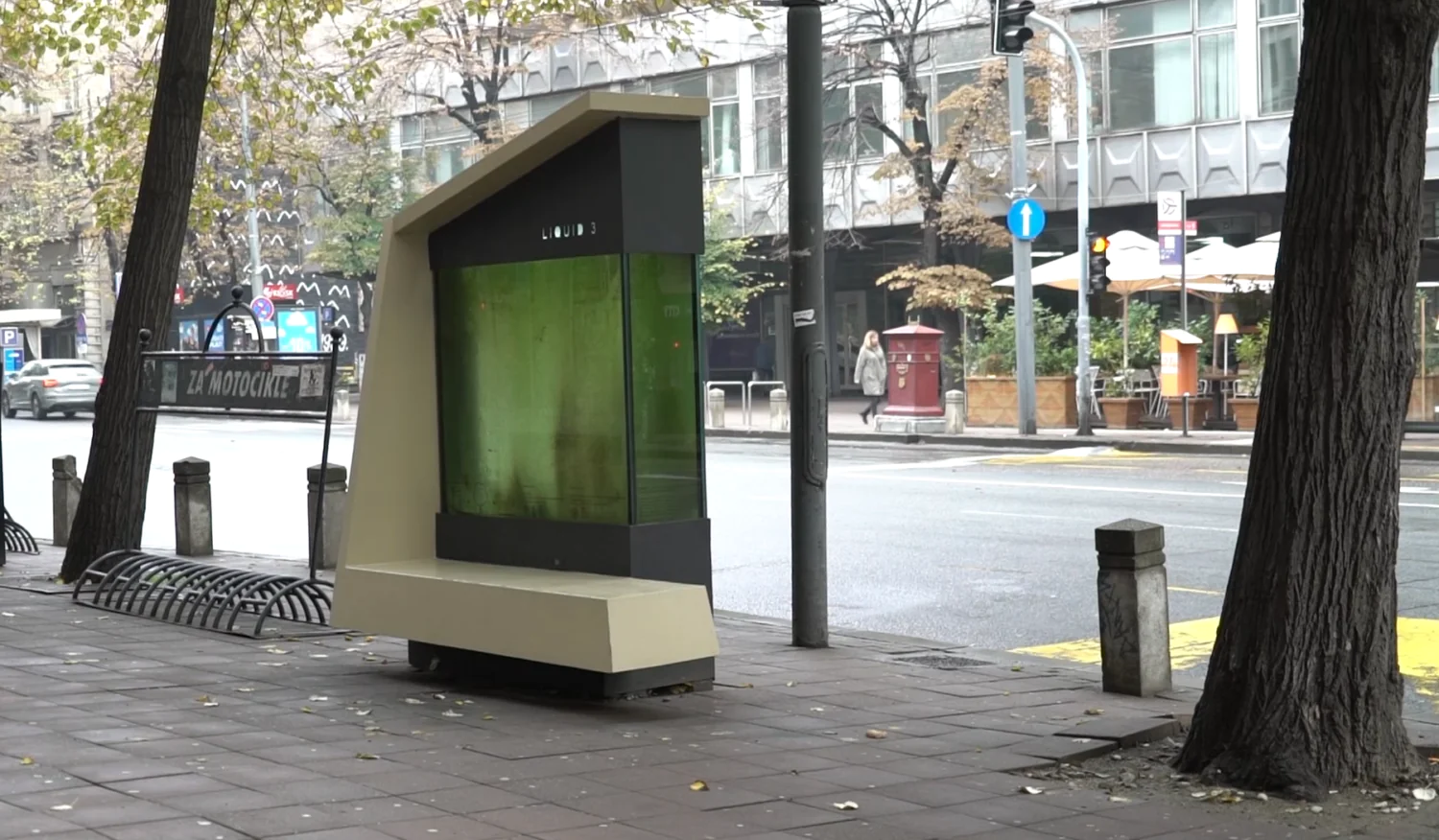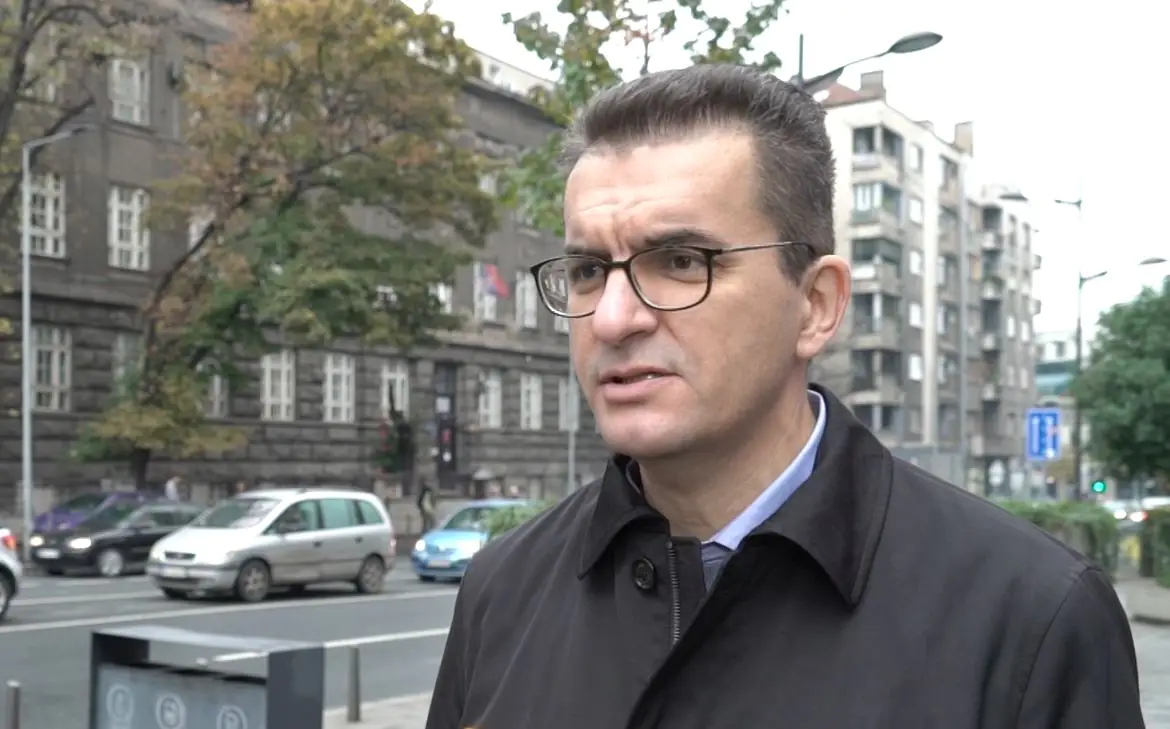Liquid Tree to Combat Air Pollution in Belgrade
Benno Krieger is a journalist who works for the German public broadcaster ZDF. He wrote the following article during his six weeks stay in Belgrade, Serbia as a fellow of the Climate and Energy Fellowships for Journalists in Europe project, funded by the European Climate Initiative (EUKI). Originally published in the online media Balkan Green Energy News, his article describes a “photobioreactor”, a type of liquid tree designed to purify the air in the capital.

The University of Belgrade’s Institute for Multidisciplinary Research invented an urban photo-bioreactor. Liquid 3 cleans the air and serves as a bench in the Belgrade city centre. According to the Global Alliance on Health and Pollution (GAHP), Serbia has one of Europe’s highest air pollution death rates. How does Liquid 3 work, and how much can it improve the air quality in Serbia’s capital?
“It all started with an appeal from the Development Program of the United Nations (UNDP Serbia) to tackle air pollution,” explains Ivan Spasojević, biophysicist and project coordinator of the Liquid 3 project at the Institute for Multidisciplinary Research.
Together with an architect and a phycologist, the scientists were looking for a way to combine the efficiency of microalgae to bind carbon dioxide with urban design. Their result, Liquid 3, was installed in September 2021 in front of the Municipality of Stari Grad in Belgrade.
Air pollution – a massive problem in Serbia
The air pollution issue in Serbia comes to a head every year when the heating season starts. Nevertheless, air pollution is a problem throughout the year in the country. According to data from the Serbian National Ecological Association (NEA), at least 75% of Serbian citizens breathe air that is polluted by particular airborne matter (PM).
Swiss air quality database IQ Air ranked Belgrade as the world’s fifth most polluted major city in early November. Two weeks later, thousands of people protested against the massive air pollution in Belgrade.
The situation is impacting the lives of citizens, as health authorities recommend skipping sports activities in the early morning and in the evening on days with extraordinarily high pollution.
Functioning of Liquid 3
The Liquid 3 photo-bioreactor consists of a glass tank filled with 600 litres of water and microalgae and a solar panel, which supplies electricity to a small pump. The pump brings air into the tank through tiny holes. The microalgae perform photosynthesis and convert water and CO2 into oxygen, which is released into the atmosphere. Biomass is a byproduct of the process.
Unlike regular trees, the facility requires more maintenance. Every month the amount of water with microalgae has to be changed almost entirely and the biomass has to be taken out.
Microalgae can remove PM particles from the air
But Spasojević emphasizes another advantage of microalgae. “They are more resistant to heavy metals than trees. Through analysis of biomass, we found that they clean 300 to 3,000 cubic meters of air from heavy metals,” he pointed out. The PM microscopic dust is a carrier of such substances. Most deaths from air pollution in Serbia are attributed to elevated levels of PM particles.
According to the study Health Impact of Ambient Air Pollution in Serbia, conducted in 2019 by the World Health Organization, exposure to high levels of PM accounts for almost 1,800 deaths per year just in Belgrade.
City trees are suffering
Ivan Spasojević wants to tackle the air pollution issue with Liquid 3 in densely populated urban areas where it’s not possible to establish green zones or where single trees cannot sufficiently clean the air. “Urban trees are suffering compared to trees in parks. They are exposed to a high level of toxic gases and dust, which covers their leaves, so they are less functional in binding carbon dioxide,” he underscored.
Therefore, Ivan Spasojević points out that it’s essential that microalgae can still bind carbon dioxide in the winter months when most trees lose their leaves and are not capable of performing photosynthesis. “We selected a robust type of microalgae that can deal with a temperature between five and 35 degrees Celsius,” he added.

One Liquid 3 unit can replace only one adult tree
The microalgae need heating if temperatures drop below five degrees. Therefore, the photo-bioreactor is also connected to the city grid in addition to the solar panel. This way, the minimum temperature can be obtained even if the sun is not shining.
“Even though microalgae are more efficient in binding carbon dioxide than regular plants, trees have a larger volume, and a higher density of biomass as our system involves a lot of water. That’s why one Liquid 3 can replace one adult tree regarding the capacity of binding carbon dioxide,” Spasojević said, reflecting on the first year of operation.
Trees and parks in the city remain important
Liquid 3 is not a replacement for trees in the city, since trees and parks have an important social function and improve the quality of life. Spasojević acknowledged that it would be expensive to build hundreds of liquid trees and maintain them every month. Currently, the maintenance for the handmade prototype costs around EUR 60 per month.
To summarize, the liquid tree cannot tackle the pollution from the various sources, such as district heating plants and heavy traffic. The aim of the project is rather to help to clean the air in the city centre where there is no room for trees and to cover the winter period, when deciduous trees don’t bind carbon dioxide.
Spasojević sees potential for Liquid 3
It is important to consider that carbon dioxide is also released during the construction of the photobioreactor due to the production of steel, glass, and the solar module. For Liquid 3 to have a positive CO2 balance, it is estimated that the system will have to be in operation for more than one or two years.
Ivan Spasojević believes that his idea can grow in the future and that his prototype Liquid 3 in Belgrade would last for several years, but that long-term financing for maintenance can extend its lifetime. “There is potential for this project, at the moment we are discussing putting five to ten liquid trees in other Serbian cities,” he stressed.
Responsible for the content of this page is the named author / organisation:
Benno Krieger, journalist
Oliver Hoelcke
